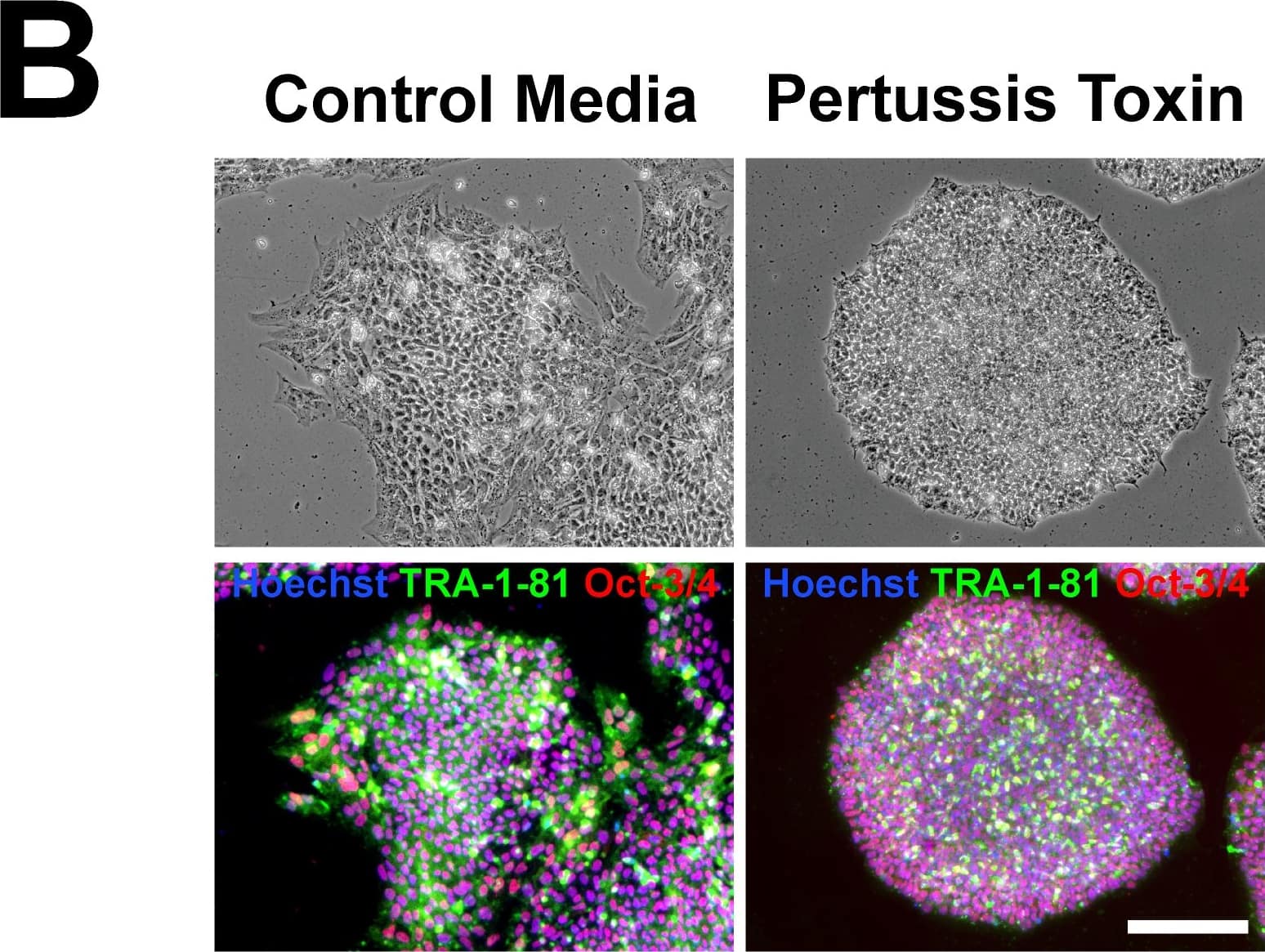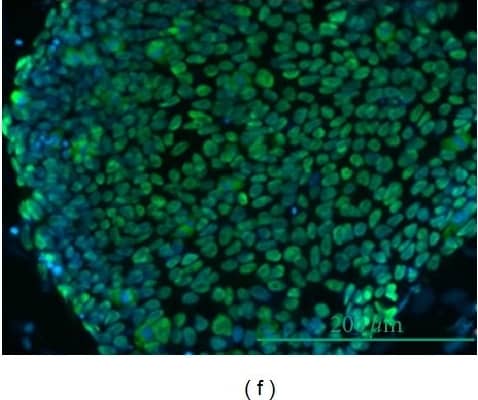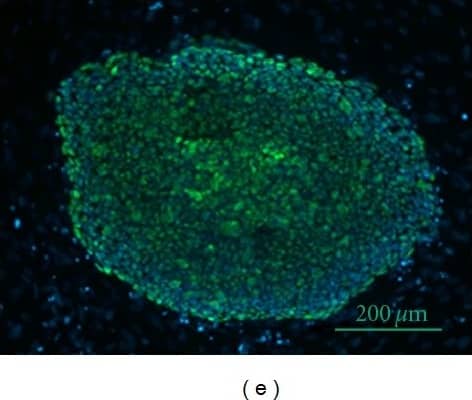Human/Mouse Oct-3/4 Antibody
R&D Systems, part of Bio-Techne | Catalog # MAB1759


Key Product Details
Validated by
Species Reactivity
Validated:
Cited:
Applications
Validated:
Cited:
Label
Antibody Source
Product Specifications
Immunogen
Met1-Asn265 (Met262Leu)
Accession # Q01860
Specificity
Clonality
Host
Isotype
Scientific Data Images for Human/Mouse Oct-3/4 Antibody
Detection of Oct-3/4 in NTERA-2 cells by Flow Cytometry
NTERA-2 cells were stained with Rat Anti-Human/Mouse Oct-3/4 Monoclonal Antibody (Catalog # MAB1759, filled histogram) or isotype control antibody (Catalog # MAB0061, open histogram) followed by Allophycocyanin-conjugated Anti-Rat IgG Secondary Antibody (Catalog # F0113). To facilitate intracellular staining, cells were fixed and permeabilized with FlowX FoxP3 Fixation & Permeabilization Buffer Kit (Catalog # FC012). View our protocol for Staining Intracellular Molecules.Detection of Human Oct-3/4 by Western Blot.
Western blot shows lysates of BG01V human embryonic stem cells and NTera-2 human testicular embryonic carcinoma cell line. PVDF membrane was probed with 1 µg/mL of Rat Anti-Human/Mouse Oct-3/4 Monoclonal Antibody (Catalog # MAB1759) followed by HRP-conjugated Anti-Rat IgG Secondary Antibody (Catalog # HAF005). A specific band was detected for Oct-3/4 at approximately 46 kDa (as indicated). This experiment was conducted under reducing conditions and using Immunoblot Buffer Group 1.Oct‑3/4 in BG01V Human Embryonic Stem Cells.
Oct‑3/4 was detected in immersion fixed BG01V human embryonic stem cells using Rat Anti-Human/Mouse Oct‑3/4 Monoclonal Antibody (Catalog # MAB1759) at 10 µg/mL for 3 hours at room temperature. Cells were stained using Rhodamine Red-coupled anti-rat IgG (red) and counterstained with DAPI (blue). Specific staining was localized to nuclei. View our protocol for Fluorescent ICC Staining of Cells on Coverslips.Applications for Human/Mouse Oct-3/4 Antibody
CyTOF-ready
Immunocytochemistry
Sample: Immersion fixed NTera-2 human testicular embryonic carcinoma cell line, D3 mouse embryonic stem cell line, and BG01V human embryonic stem cells
Intracellular Staining by Flow Cytometry
Sample: NTERA-2 human testicular embryonic carcinoma cell line
Western Blot
Sample: BG01V human embryonic stem cells and NTera‑2 human testicular embryonic carcinoma cell line under reducing conditions only
Reviewed Applications
Read 1 review rated 5 using MAB1759 in the following applications:
Formulation, Preparation, and Storage
Purification
Reconstitution
Formulation
*Small pack size (-SP) is supplied either lyophilized or as a 0.2 µm filtered solution in PBS.
Shipping
Stability & Storage
- 12 months from date of receipt, -20 to -70 °C as supplied.
- 1 month, 2 to 8 °C under sterile conditions after reconstitution.
- 6 months, -20 to -70 °C under sterile conditions after reconstitution.
Background: Oct-3/4
Oct-3/4, also termed Oct-3 or Oct-4, is a POU transcription factor that is expressed in totipotent embryonic stem and germ cells.(2, 3) Oct-3/4 is required to sustain stem cell self-renewal and pluripotency.(4) It is considered a master regulator of pluripotency that controls lineage commitment and is the most widely recognized marker of totipotent embryonic stem cells.
References
-
Takeda, J. et al. (1992) Nucleic Acids Res. 20:4613.
-
Scholer, H.R. et al. (1989) EMBO J. 8:2543.
-
Rosner, M.H. et al. (1990) Nature 345:686.
- Niwa, H. et al. (2000) Nat. Genet. 24:372.
Long Name
Alternate Names
Gene Symbol
UniProt
Additional Oct-3/4 Products
Product Documents for Human/Mouse Oct-3/4 Antibody
Product Specific Notices for Human/Mouse Oct-3/4 Antibody
For research use only






